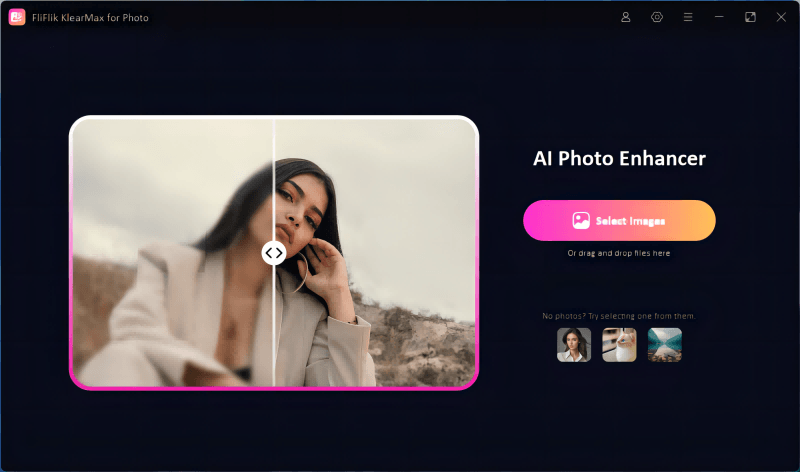Many users struggle with lackluster visual outputs when using stable diffusion lighting prompts in AI-generated images. The key to overcoming this common issue lies in mastering the prompts that control lighting interpretation and rendering. Properly executed, these prompts can dramatically enhance the realism, mood, and emotional impact of your images. This guide will offer crucial insights and techniques for leveraging lighting prompts effectively, ensuring your stable diffusion projects achieve their full artistic potential.
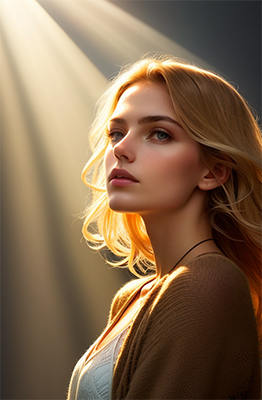
Understanding the Basics of Writing Prompts for Stable Diffusion
Writing prompts for stable diffusion is an art that combines creativity with technical know-how. It’s about crafting text that effectively guides AI to generate desired visual outcomes. This process ensures your images accurately reflect your artistic vision.
1: Subject
In Stable Diffusion, the “subject” defines the main focus of your desired image. Being specific is key to obtaining high-quality outputs. For example, a vague prompt like “a sorceress” often results in generic images. Instead, describe her appearance, actions, and setting in detail. A prompt like “a sorceress with flowing silver hair, casting wind spells, dressed in a shimmering blue robe on a stone tower” provides a clearer guide for the AI.
2: Medium
The “medium” specifies the artistic method or material used to generate images, which profoundly impacts the stylistic outcome. Choices like charcoal, watercolor, or digital art direct the AI to mimic these textures and visual effects in the output. For instance, using “watercolor” in a prompt might lead to softer edges and more fluid color transitions, resembling traditional watercolor paintings. This specification helps achieve a desired aesthetic, whether you’re looking for the crisp lines of a digital illustration or the organic feel of an oil painting. Adjusting the medium in your prompt enhances the creative control over how the AI interprets and executes your artistic vision.
3: Style
Style refers to the distinctive visual and artistic approach that shapes the final image. Specifying a style in your prompt, such as Baroque, Impressionist, or Cyberpunk, guides the AI to adopt certain aesthetic elements characteristic of that style. This could include the use of light, brush strokes, color schemes, or thematic content. For instance, an Impressionist style might result in softer, more blended color transitions, while a Cyberpunk style would feature high-tech, futuristic elements with vibrant neon colors.
4: Art-sharing Website
Art-sharing websites are online platforms where artists and creators can display, share, and sell their artwork. These websites provide a community space for users to engage with diverse forms of art, from traditional paintings and drawings to digital art and photography. Users can upload their creations, receive feedback, and connect with other artists and potential buyers. Popular art-sharing websites like DeviantArt, ArtStation, and Behance offer tools and features that help artists build portfolios, participate in forums, and join contests.
5: Resolution
Resolution in digital imaging refers to the detail an image holds, which is often represented by the number of pixels in both the width and height dimensions of an image. Higher resolution means more pixels are used to depict the image, resulting in finer detail and the potential for larger prints without loss of quality. For digital artwork and images generated by AI, such as those created with Stable Diffusion, specifying a high resolution is crucial when the intention is to maintain clarity and detail at larger sizes.
6: Additional Details
Additional details refer to specific attributes or elements that enhance the generated images, such as emotions, actions, or environmental conditions. Including these details helps refine the AI’s output by guiding its focus towards more nuanced and complex interpretations. For instance, specifying “a windy autumn afternoon” or “a joyful expression” can dramatically alter the mood and dynamic of the scene, leading to more personalized and contextually rich visual representations in the generated artwork.
7: Color
Color in digital art plays a crucial role in conveying mood, atmosphere, and narrative within a composition. It involves the strategic use of hues, saturation, and brightness to enhance the visual impact of artwork. In digital platforms, colors are typically managed through various color models like RGB (red, green, blue) or CMYK (cyan, magenta, yellow, black), depending on the medium (screen or print). In AI-generated art, specifying color in prompts can direct the AI to emphasize certain tones or color schemes, aligning the artwork more closely with the creator’s intent.
8: Lighting
Lighting involves the strategic placement and manipulation of light sources within a composition to highlight forms, create shadows, and convey a specific atmosphere. In the context of AI-generated art, using the keyword stable diffusion prompt light source can guide the AI to incorporate specific lighting effects, like a sunbeam or a spotlight, enhancing the visual narrative. Additionally, the phrase how to get brighter lighting prompt fooocus indicates a desire for more intense and focused illumination, which can make an image appear more vivid and dynamic. Properly applied, lighting can dramatically influence the perception and emotional impact of digital artworks.
Popular Lighting Keywords for Stable Diffusion Prompts
In Stable Diffusion, the right lighting keywords can dramatically transform your generated images. They guide the AI to craft scenes with specific atmospheres and visual impact. Popular lighting help achieve everything from soft, morning light to harsh, dramatic shadows, enhancing the storytelling potential of the artwork.
1: Volumetric Lighting
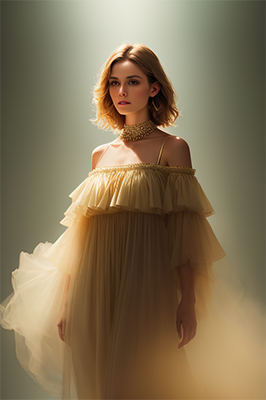
Volumetric lighting, often seen in 3D modeling and cinematic visuals, creates beams of light that appear to have physical presence, illuminating particles in the air. This technique adds depth and drama, enhancing realism by depicting how light interacts with the environment, such as sunbeams filtering through clouds.
2: Rim Lighting
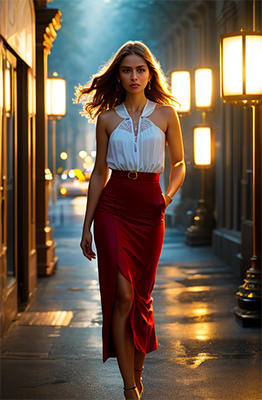
Rim lighting is a technique used in photography and digital art to outline subjects with a backlight. This highlights their edges, creating a glowing silhouette effect. It emphasizes contours and can separate the subject from the background, adding depth and focus to the image.
3: Sunlight
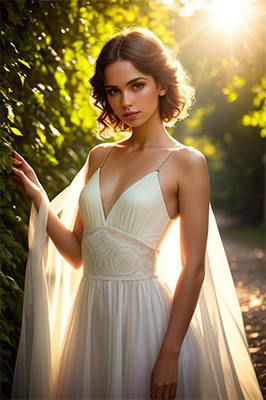
Sunlight in digital art is used to replicate natural light from the sun, bringing warmth, realism, and a specific time of day to an image. It affects colors, shadows, and the overall mood, ranging from the soft golden hues of dawn to the intense brightness of midday. Properly rendered sunlight can dramatically enhance the lifelike quality of scenes in digital artworks.
4: Backlight
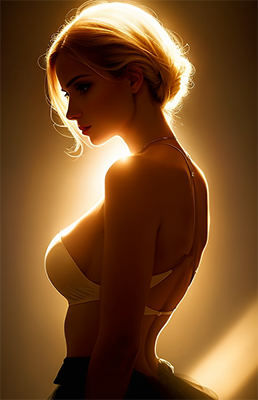
Backlight refers to a lighting technique where the light source is positioned behind the subject, causing the subject to be outlined or silhouetted against the light. This technique is often used to create mood and drama, emphasize shapes, and convey a strong visual contrast. It can also highlight subtle contours and textures that are not visible with front lighting.
5: Dimly Lit
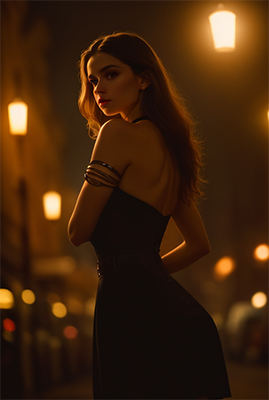
Dimly lit describes scenes or settings with low light levels, often used to evoke mystery, intimacy, or quietude. In visual media, dim lighting softens details, casts deep shadows, and can alter the perceived colors of a scene. It’s a common choice for creating moody, atmospheric conditions in both films and digital artworks.
6: Crepuscular Rays

Crepuscular rays, also known as “God rays”, are columns of sunlight that radiate from a single point in the sky, typically seen during twilight through gaps in clouds or between other objects like mountains or buildings. These rays, highlighted by particles or mist in the air, add a dramatic and almost divine element to imagery, enhancing the depth and emotional impact of the scene.
Steps to Add Lighting Prompts in Stable Diffusion
To add lighting prompts effectively in Stable Diffusion and enhance the resulting images, follow these steps:
Launch the Stable Diffusion platform and prepare to enter your detailed prompts.
Input specific descriptions for your desired image, focusing on lighting effects like “vibrant sunset behind the mountains” to guide the AI more effectively.
Clearly state what you want to avoid in your image, such as “no overcast skies”, to prevent unwanted elements from appearing.
Create the image using your prompts and settings. Once generated, review the outcome and make any necessary adjustments to better capture your vision.
Once satisfied with the Stable Diffusion result, open FliFlik KlearMax for Photo. Install it and register the product using your email and license code to unlock its full capabilities. Select the appropriate enhancement model and mode for your image and apply the enhancement. Finally, export the high-quality, enhanced image ready for any use.
![smooth tool klearmax]()
Final Words
Lighting really matters when using stable diffusion lighting prompts to generate digital art. By carefully crafting these prompts and enhancing the resulting images with KlearMax for Photo, artists can achieve superior clarity and visual impact. We highly recommend KlearMax for Photo to bring out the best in your artwork, ensuring each piece is vivid and detail-rich.
Coming Soon
